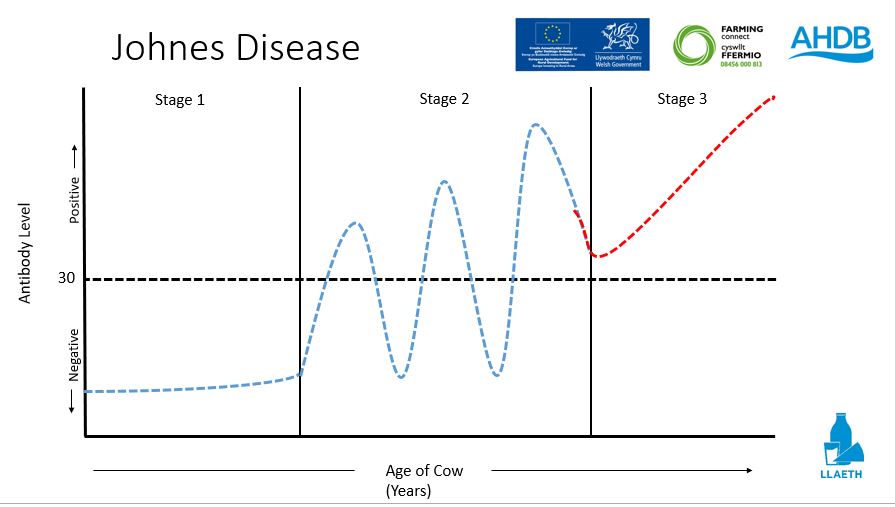- Home
- Managing and treating Johnes
Managing and treating Johnes
Arthur Owen from our strategic dairy farm Bodysgaw Isa was joined by Karen Bond, Veterinary Technical Advisor at National Milk Records, to look at the practical strategies for reducing Johne's.
Johnes stages and early infection risks
Karen explained that Johnes reduces a cows ability to ingest protein and nutrients, inevitably resulting in the animal leaving your farm as a dead loss.
The most common time to contract Johne's is within the first 24 hours of birth through infected faeces, highlighting the disease's long incubation period.
Regular testing can help inform breeding decisions, segmentation, and actions to divide calving areas to prevent the contraction and spread of the disease.
Karen offered practical guidance on how to ensure infected faeces does not reach young calves by recognising, testing, tagging and segregating positive and at-risk cows.
Arthur Owen gave examples of how he had reduced instances of Johnes at Bodysgaw Isa including ear tag identification, cow segregation and operating different calving areas for those cows with confirmed cases or higher risk.
The three key stages of Johnes
Karen recognised that testing can be challenging depending on which of the three key stages the disease is in, and went on to describe each stage in detail:

- Stage 1 is where the animal is mainly hosting the hidden disease with limited to no impact
Testing during stage one, often below the age of two years, is generally ineffective and the risk of spread is minimal
- Stage 2 is where the cow is battling with the disease with fluctuating mild symptoms
This stage is often triggered by stress through another diseases, such as Mastitis, lameness or by giving birth. The cow starts to release anti-bodies in this sub-clinical stage, has a high cell count and may also display some symptoms such as reduced production.
Testing during this period can be difficult with cows often looking healthy and showing confusing fluctuating test results affected by the ability of the cow’s immune system to either fight or be overcome by the disease.
As it is commonly spread through faeces stage two animals present a high risk of spreading Johnes throughout your herd, especially in calving animals.
- Stage 3 is where the disease starts overcoming the animal’s immune system
During this period, it often becomes visibly easier to recognise cows with clinical signs of scouring, wasting, poor production, fertility, body condition and overall health. This is commonly seen in four or five year olds animals.

This project has received funding through the Welsh Government Rural Communities - Rural Development Programme 2014-2020, which is funded by the European Agricultural Fund for Rural Development and the Welsh Government.

